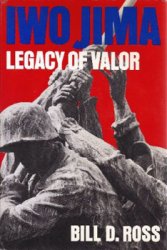The film festival emerged soon after World War II (p. 356), reflecting the growing internationalization of cinema, the decline of the Hollywood studio system, and the expansion of independent filmmaking. In the decades after Cannes, Berlin, and Venice established their events, the film festival quickly became a central institution within world film culture. Most of the non-Hollywood feature films discussed in Parts 4 and 5 of this book, from Italian Neorealism to the cinemas of the postcolonial world, gained international stature through festivals. Festivals brought to attention the influential auteurs of the 1950s and 1960s, the various new waves and young cinemas, Third World political filmmaking, and most new trends since the 1970s.
After videotape allowed filmmakers to submit films for previewing, festivals proliferated. In 1981, there were around 100 annual festivals. By 2001, there were over 700. By the end of the century, film festivals had provided a global distribution system, perhaps the only one rivaling Hollywood’s.
Most festivals are purely local affairs, giving audiences in small cities a chance to see films that would never appear there otherwise. Some festivals last two days, others two weeks. Some aim to promote tourism, others to celebrate regional filmmaking. Many are thematic festivals, concentrating on certain genres (science fiction, fantasy, films for children) or themes (ethnic identity, religion, sexuality). Feminist and gay filmmaking became dependent on special-interest festivals, such as San Francisco’s Tranny Fest for films about transgen-dered life. Austin, Texas created a festival for films made in super 8mm, and Philadelphia boasted a festival for films rejected by other festivals.
Festivals sometimes became powerful and moving assertions of community. Locarno, Switzerland, is famous for its nighttime screenings in the Piazza Grande, where 7,000 viewers seated on plastic chain before a temporary screen applaud and cheer. Sarajevo, a city shattered by the Balkan war, created its first film festival in 1995, when snipers and shellfire were constant threats. The festival gave people a chance to rebuild a public life outside the bomb shelters. In such ways, festivals can reshape a nation’s culture. The Sydney International Film Festival began fighting Australian film censorship in the 1960s and eventually won the right to show all its films unaltered.
Festivals also allow national cultures to present themselves in a good light. There can be little doubt that westerners’ attitudes toward Iran were softened by the humanistic films (p. 670) that took so many prizes on the festival circuit. Likewise, most governments denied Taiwan diplomatic recognition, and so its films would have had little chance to be seen abroad had not festivals made them available. to Cannes and Venice, Hou Hsiao-hsien and Edward Yang (p. 660) found international funding and distribution. Indeed, the films of some major directors were better known in festivals than in their home countries.




 World History
World History









